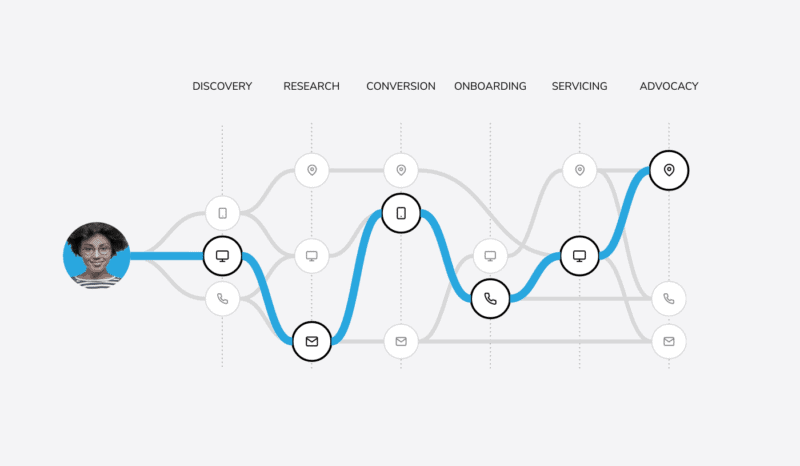How to Improve Customer Data Security & Privacy for a Cookieless World

With the impending loss of third-party cookies — as well as other user-tracking changes — the importance of customer data security and privacy is growing alongside the need for authenticated, first-party data.
Approximately 62% of marketers are investing in first-party data strategies to prepare for the impact of identifier deprecation on their customer acquisition and conversion use cases.
But the increasing urgency to access and expand first-party data comes with risks. Beyond data breaches, brands must consider how collecting, using and sharing customer data will impact consumer trust.
A recent survey found that only 33% of people believe companies are using their data responsibly. The rest have a neutral or negative view of how brands leverage their email addresses, phone numbers, website browsing histories and other details.
Only by understanding the current state of data security and privacy — and the responsibilities that go hand in hand with collecting customer data — can you succeed in the privacy-first future.
But don’t worry: there’s hope! In this blog post, we’ll provide context and some high-level next steps you can take to collect customer data with security and privacy in mind.

Survey the Customer Data Security & Privacy Landscape
Data protection and privacy regulations are evolving — and are only getting stricter. What started with the General Data Protection Regulation (GDPR) in Europe and the California Consumer Protection Act (CCPA) in the U.S. is spreading around the world.
For instance, Brazil’s General Data Protection Law took effect in 2020, and with it a requirement for any organization that processes personal data in the country to appoint a data protection officer. The result? Experts predicted nearly 50,000 companies would need to hire data protection officers to stay compliant.
And then there’s the increasing number of high-profile data breaches. IBM’s annual Cost of a Data Breach Report found that 2021 had the highest average cost related to data breaches in its 17-year history, reaching $4.24 million.
Unfortunately, due to a post-COVID-19 workforce where an increasing number of employees work remotely, these problems have only gotten worse.
As companies swap new tools in and out of their marketing technology stacks to collect data across multiple sources, visibility into customer data grows foggier. This makes effective data governance difficult, increasing vulnerability and setting brands up for costly consequences.

Collect Customer Data With Security & Privacy in Mind
Your first step to maintaining regulatory compliance and consumer confidence is understanding the principles — and nuances — of today’s various data protection and privacy laws.
That means determining:
- Who’s regulated
- Who’s protected
- What information is protected
- How anonymous, de-identified, pseudonymous and aggregated data is viewed
- How your organization’s roles and responsibilities are defined
Keep in mind that, while you may feel confident you’re in compliance with one law, data protection and privacy is an all-or-nothing affair.
For example, GDPR states that any personal data that can be used to identify a data subject is protected, but information linked at the household or device level is not included. Meanwhile, CCPA rules that, with some exceptions, any personal information that identifies, relates to, describes or is capable of being associated with a particular consumer or household is protected.
Once you have a handle on your obligations under government regulations, you should focus on breaking down data silos and increasing visibility into customer data. This is especially important for managing any consumer compliance inquiries, which will require you to locate source data in a timely manner to fulfill deletion requests.
Here is where customer data platforms (CDP) shine, according to McKinsey & Company. By supporting the efficient aggregation and management of customer data in one place, a CDP “streamlines preference management and facilitates the process if customers want to invoke their CCPA or GDPR rights.”
No matter which technology you’re using, make sure you’ve partnered with a vendor that takes data protection and privacy seriously. Under GDPR, any individual or party that you allow to use and process customer data must adhere to strict regulatory requirements (speaking of which, see how we handle security at ActionIQ).
Evaluating a potential technology partner’s capabilities against each area of various privacy regulations should be a top priority when selecting any addition to your martech stack (if you want to learn how to develop a technology stack that wows and wins customers, you’ll love our martech stack webinar here).

Prioritize Customer Trust
The value of customer data protection and privacy goes well beyond avoiding penalties or protecting against data breaches.
Building trust with your customers and being transparent about how you’ll collect and use their data — and how you’re keeping it safe — is valuable. It allows you to strengthen brand relationships and protect your organization as privacy regulations continue to evolve.
Recent laws and updates to user tracking make it clear: Voluntary agreement is now the standard for collecting customer data.
Brands that make consented data sharing the norm, then, will be prepared for whatever comes next from both legislators and tech companies.
So it’s up to you to not only be upfront about how you plan to leverage customer data, but also about why sharing it with you in the first place will benefit your customers. Sixty-six percent of consumers say they’re willing to share their personal information in return for additional value. Make sure you can deliver.
Learn More
Check out the ActionIQ Government Regulations Compliance Brief to learn more about different data protection and privacy laws and how ActionIQ is built to help you maintain regulatory compliance.





